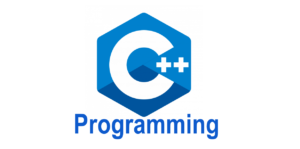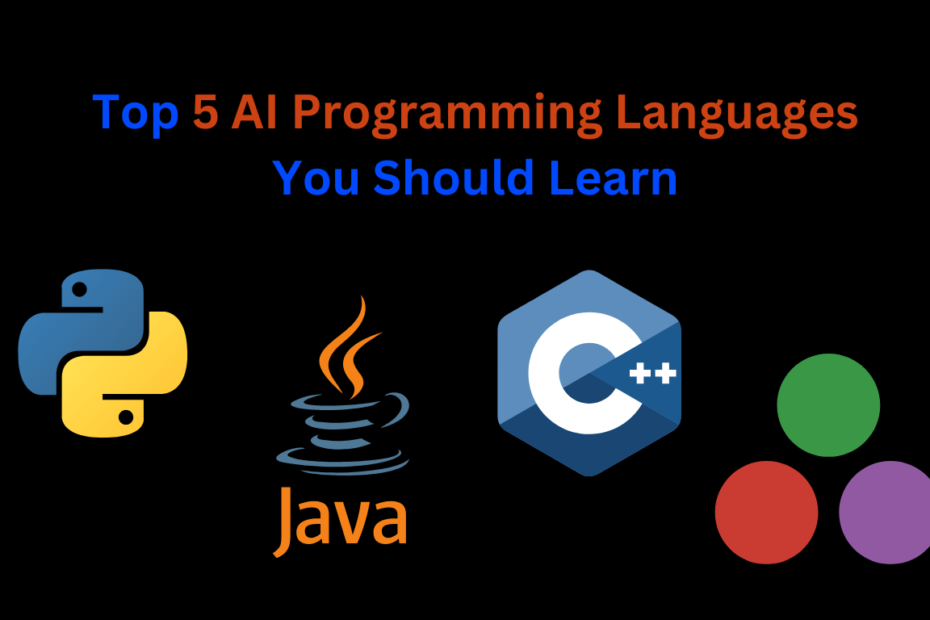In today’s technology-driven world, AI programming languages play a pivotal role in building smart systems, automating processes, and driving innovation across industries. Whether you’re a beginner or an experienced developer looking to expand your skills, learning the right languages can set you up for success in AI coding and AI development.
Here are the top 5 programming languages you should consider if you’re serious about diving into AI.
1. Python

Why Python Dominates AI Development
Python has established itself as the king of AI programming languages due to its simplicity, readability, and vast ecosystem of libraries tailored for AI and machine learning.
Key Benefits for AI Coding:
- Easy to learn and write: Python’s syntax is beginner-friendly.
- Rich libraries: TensorFlow, Keras, PyTorch, Scikit-learn, Pandas, and NumPy.
- Large community: Extensive documentation, tutorials, and forums.
- Rapid prototyping: Developers can quickly build and test AI models.
Ideal For:
- Machine learning
- Deep learning
- Natural Language Processing (NLP)
- Computer Vision
Real-World Usage:
Companies like Google, Netflix, and Spotify use Python in their AI development for recommendation engines, user behavior prediction, and data analysis.
2. R

Why R Is Perfect for Data-Centric AI Projects
R is primarily known for statistical computing and data visualization, making it a strong candidate for AI coding, especially in fields like bioinformatics, finance, and academia.
Key Benefits:
- Statistical prowess: Great for handling complex data analytics.
- AI-friendly libraries: Caret, nnet, randomForest, and e1071.
- Visualization tools: ggplot2, Shiny, and Lattice make data storytelling intuitive.
- Integration with other tools: Easily integrates with Hadoop and Spark.
Ideal For:
- Predictive modeling
- Data visualization
- Bioinformatics and research
Real-World Usage:
R is used in academia and industries for tasks like disease prediction models, financial forecasting, and risk modeling.
3. Java

Why Java Still Holds Its Ground in AI
Java is a versatile language with long-standing popularity in enterprise applications. It’s known for its portability, scalability, and performance in large-scale AI development.
Key Benefits:
- Platform independence: Write once, run anywhere.
- Robustness: Exception handling and garbage collection.
- AI libraries: Deeplearning4j, Weka, MOA, and Java-ML.
- Big Data integration: Works well with Apache Hadoop and Spark.
Ideal For:
- AI-powered web and mobile apps
- Enterprise-level AI solutions
- Natural language processing (NLP)
Real-World Usage:
Java is commonly used in banking, retail, and insurance industries to develop fraud detection systems and customer service chatbots.
4. C++

Why C++ Is a Powerhouse for AI Efficiency
C++ is known for its speed and performance, making it ideal for real-time AI systems where efficiency is crucial, such as in robotics or game development.
Key Benefits:
- High performance: Faster execution compared to higher-level languages.
- Memory management: Greater control over system resources.
- AI libraries: Caffe, SHARK, and FANN (Fast Artificial Neural Network).
- Used in embedded systems: Ideal for developing AI on the edge.
Ideal For:
- Robotics
- Game AI
- Real-time systems
Real-World Usage:
C++ is heavily used in autonomous driving technologies, real-time trading systems, and embedded AI devices.
5. Julia

Why Julia Is Rising Fast in AI Circles
Julia is a relatively new but powerful language designed for high-performance numerical analysis and computational science, making it a great fit for AI development.
Key Benefits:
- Speed: Nearly as fast as C++ with the simplicity of Python.
- Parallelism: Built-in support for parallel and distributed computing.
- AI and ML packages: Flux.jl, MLJ.jl.
- Interop: Works well with Python, R, and C.
Ideal For:
- Scientific computing
- High-performance machine learning
- Deep learning research
Real-World Usage:
Julia is gaining traction in finance, aerospace, and pharmaceutical industries for AI modeling, simulations, and data analysis.
Comparison Table
| Language | Strengths | Use Cases | AI Libraries |
|---|---|---|---|
| Python | Easy syntax, rich ecosystem | ML, NLP, CV | TensorFlow, PyTorch |
| R | Statistical analysis, visualization | Predictive modeling, research | Caret, ggplot2 |
| Java | Scalability, performance | Enterprise AI, chatbots | Deeplearning4j, Weka |
| C++ | Speed, control | Robotics, embedded AI | Caffe, FANN |
| Julia | Speed, scientific computing | Simulations, deep learning | Flux.jl, MLJ.jl |
How to Choose the Right AI Programming Language
Choosing the right language depends on your goals:
- Beginner-friendly? Go with Python.
- Data-heavy projects? R is great.
- Performance-critical AI? Try C++ or Julia.
- Enterprise-scale apps? Java fits the bill.
Also, consider the tools and platforms you’re using. Some AI frameworks work better with specific languages.
Conclusion
Whether you’re analyzing data, building neural networks, or programming self-driving cars, learning the right AI programming languages can dramatically enhance your AI coding skills. Python remains the most accessible and widely used, but each of the other languages has unique strengths that cater to different needs in AI development.
Start with one that aligns with your current skill level and project needs, and build from there. With the fast-paced evolution of AI, being multilingual in programming gives you a competitive edge.
Read More: Best AI Frameworks for Machine Learning and Deep Learning
FAQs
1. Which AI programming language is best for beginners?
Python — it’s easy to learn, has vast support, and is widely used in AI.
2. Is R better than Python for AI?
R excels in data analysis, but Python is better for full-scale AI projects.
3. Can I use Java for machine learning?
Yes, especially in enterprise applications with Java-based ML libraries.
4. Why is C++ used in AI?
For tasks needing high performance like robotics or real-time systems.
5. Is Julia worth learning for AI?
Absolutely — it’s fast and gaining traction in scientific AI research.

